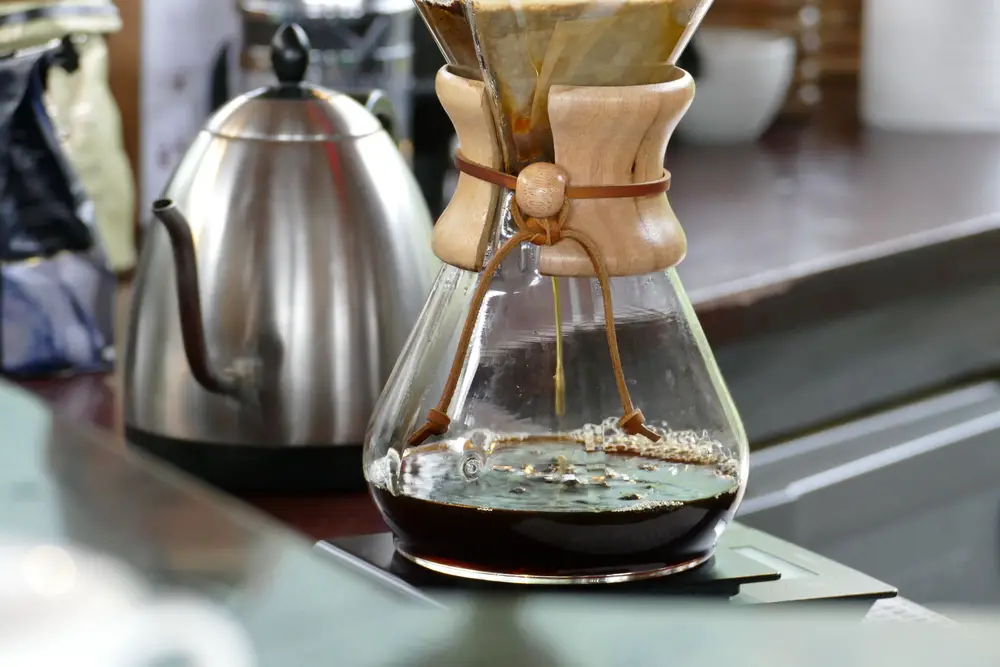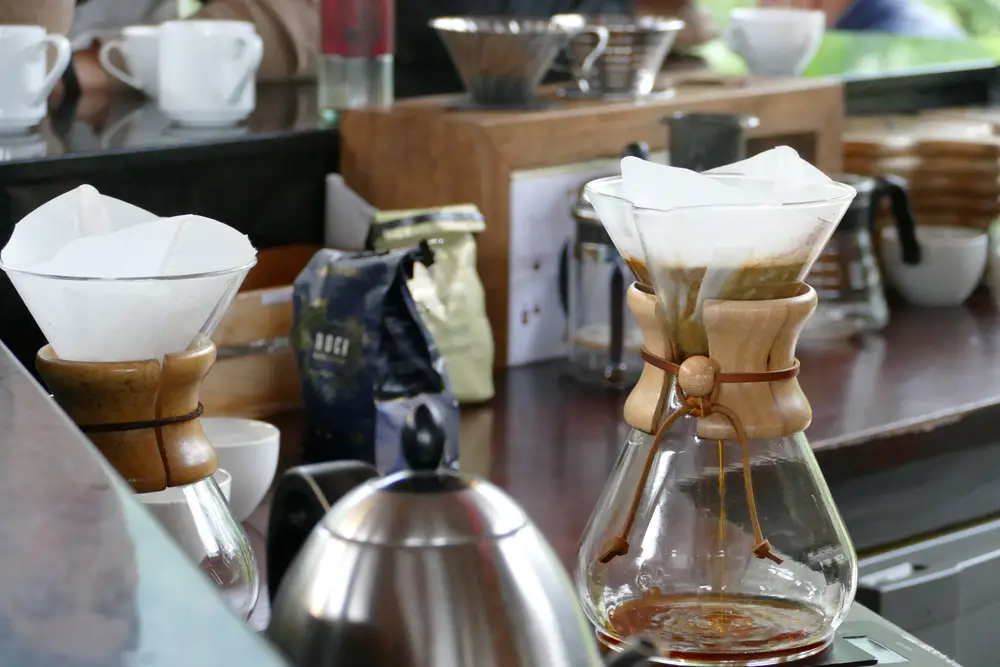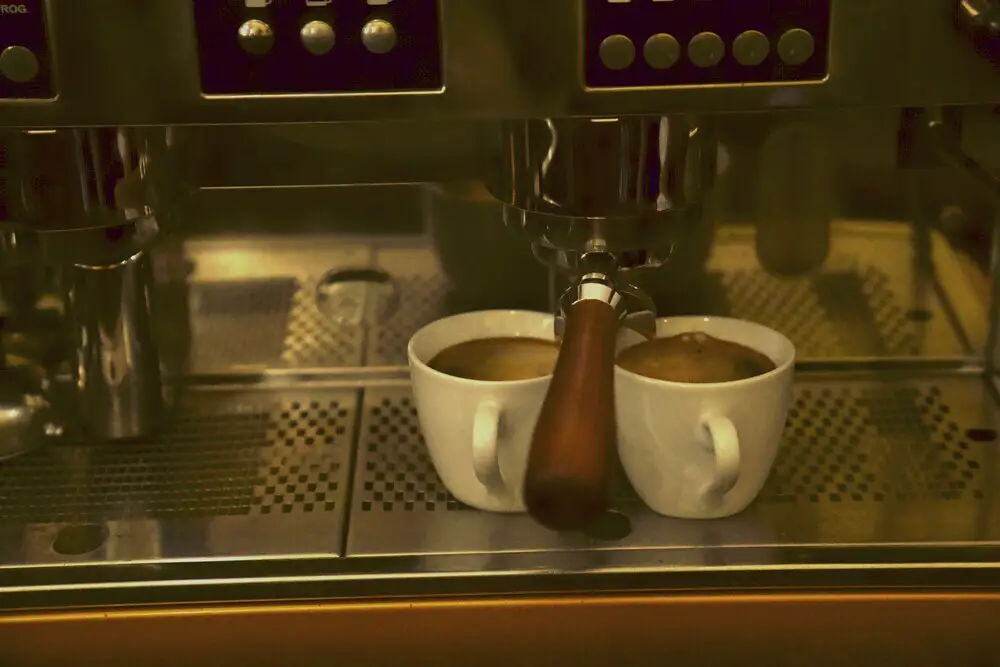As a result of the increasing legalization of cannabis around the world, consumers are beginning to use it in a variety of products such as brownies, candies, and other savory foods.
If you want to add cannabis to your favorite coffee, there are some very simple ways. Putting ground buds in your coffee filter is not one of them.
The psychoactive compounds in cannabis are not activated by hot water alone, so you’ll need some sort of prepared edible form of cannabis to mix with your coffee.
Table of Contents
Why combine coffee and cannabis?
Coffee is most commonly paired with CBD. CBD is the chemical ingredient in marijuana that doesn’t induce a “high” feeling, but has many benefits.
CBD is enjoying increasing popularity, e.g. B. in older people who are looking for alternatives to pain management.
CBD also gives users a sense of relaxation and can reduce stress and anxiety.
However, there are also coffee products that contain THC, the chemical ingredient that causes the “high”. All cannabis products – whether with THC or CBD – have a different effect due to the chemical ingredients.
What is the entourage effect?
Many people take these two cannabinoids (CBD and THC) separately, but what happens when THC and CBD are combined? Balance.
The two cannabinoids compete for the same receptors in the brain. So, when there is more CBD than THC, the physical and mental sensation is different than when there is more THC than CBD.
It all depends on what kind of experience you are looking for. Sometimes you want the high THC effect, sometimes you want the anti-anxiety effects of the CBD-rich strains. Sometimes you need a mix of both. To get the most out of cannabis, it helps to understand this.
How do caffeine and THC affect health?
Caffeine and delta-9-tetrahydrocannabinol (THC) are psychotropic substances.
Psychoactive substances can affect our behavior, mood, thoughts, and general mental state. Psychotropic substances have potential health benefits, for example in the treatment of anxiety, depression, sleep disorders and schizophrenia.
Although psychiatric drugs like caffeine and THC can have potential health benefits, they can also have side effects that depend on the strength of the cannabis and coffee, your general health, and any medications you may be taking, among other things.
What are the effects of mixing coffee and cannabis?
Previous studies show that the effect of coffee and cannabis sets in at different speeds in different organisms. A cup can relax you or stimulate your brain greatly.
You can overdose on coffee and cannabis. If you don’t know how much your body needs, you may experience an excessive effect, so take it in a limited amount at first and see how it reacts in your body.
Be patient and wait for the effects to kick in. Do not proceed further until you feel that a considerable amount of time has passed and you are not having the desired effect.
Euphoria
The consumption of caffeine and cannabis leads to an increase in dopamine levels in the brain. Dopamine is a hormone responsible for joy and happiness. So, when cannabis is mixed with the drink, the feeling of euphoria is enhanced.
State of concentration
The combination of cannabis and coffee in the morning sets you up for a focused and productive day. This combination creates a special balance of attention.
Nervousness from coffee and influence of CBD
CBD can help reduce the feeling of jitters associated with coffee consumption. Drinking multiple cups of coffee can increase your alertness and focus. However, if you add a dose of CBD, the effects will be weakened and you will become calmer.
Different effects
Keep in mind that both caffeine and THC are natural compounds that affect everyone differently. That’s why it’s always a good idea to talk to your doctor before taking any psychiatric medication.
The following are some of the effects and benefits that each product can offer.
Effects of Caffeine
Coffee contains a stimulant known as caffeine. Caffeine acts on the central nervous system by inhibiting adenosine receptors in the brain. Adenosine is an inhibitory neurotransmitter that slows down neural activity in the brain, making you feel fatigued and sleepy. When caffeine reaches the brain, it blocks adenosine from decreasing neuronal activity. That’s why you feel more energetic and awake after a cup of coffee.
Effects of THC
When THC from cannabis enters the bloodstream, it is rapidly absorbed by the brain. Once in the brain, it binds specifically to CB1 receptors, causing short-term changes in normal brain function.
Reactions depend on the type of strain consumed. With sativa strains, users experience an effect similar to that of a coffee stimulant. These include an increase in euphoria and alertness. On the other hand, indica strains induce sedation and a more intense physical effect.
Is Mixing Coffee and Cannabis Bad?
Since coffee and cannabis offer so many health benefits on their own, one might assume that enjoying a little cannabis with coffee is okay. The reality is that it is safe for most, but not all.
THC and coffee can increase the amount of dopamine in our system. While dopamine can trigger feelings of happiness and euphoria, too much at once can trigger anxiety, restlessness and paranoia.
In addition, both caffeine and THC can increase blood pressure and heart rate.
For this reason, many doctors advise against combining caffeine and THC for people with heart problems and those at risk of cardiac arrhythmia. So, if this is your first-time mixing coffee and cannabis, be sure to consult your doctor to make sure it will work for you.
How to mix coffee with cannabis?
Start with decarboxylation
This is the mandatory step in any cannabis recipe to achieve the desired effect. When heat is applied to the cannabis strain, the acidic THC is converted to tetrahydrocannabinol, but to achieve the same effect in recipes it needs to be decarboxylated.
How to decarb the cannabis strain for coffee
- Take the marijuana and grind it up.
- Then place the baking paper on a baking sheet and spread the marijuana on it.
- Place the sheet in the oven and heat it to 105 degrees Celsius. You may need to heat for at least 45 minutes to achieve ideal decarboxylation.
- The temperature during the process should not exceed 120 degrees Celsius.
- The decarboxylation is complete.
How to brew cannabis coffee
Now you can continue with the preparation.
ingredients
- 2 grams of decarboxylated cannabis
- 4 cups of water
- Two teaspoons of butter
- Coffee
Equipment needed
- Coffee pot
- Medium saucepan
- Big bowl
- Mixing spoon
instructions
- Pour water into the saucepan until it is about half full and bring to the boil.
- Add all of the decarboxylated ground cannabis to the bowl of water and mix with the butter. Place the bowl in the saucepan.
- Reduce the heat and monitor the temperature for at least 40 minutes. The water should not boil. Stir the mixture from time to time.
- Remove the bowl and let cool. The butter will separate from the water as it cools. The ingredients in marijuana are absorbed in the butter.
- Prepare a coffee.
- Put some butter with the coffee.
- The cannabis coffee is ready to be enjoyed.
The ideal time to drink coffee with cannabis
Wondering when you usually drink coffee? Maybe two to three hours after waking up. This should be emulated with cannabis coffee.
If you drink a cannabis coffee between 9 and 11 a.m., you should at least get through the day until your cortisol levels start to rise again after lunch. For an extra boost after lunch, you can have another serving between 1pm and 4pm.
Conclusion
Used properly, a combination of THC/CBD and coffee can produce a good high.
Ideally, create a customized dosing schedule based on your body’s tolerance and lifestyle.
It’s important to remember that everyone reacts differently to cannabis and coffee, so experiences with this combination can vary greatly. While several animal studies have been conducted to examine the effects of weed and caffeine on the body, much more human research is needed to provide better insight.



